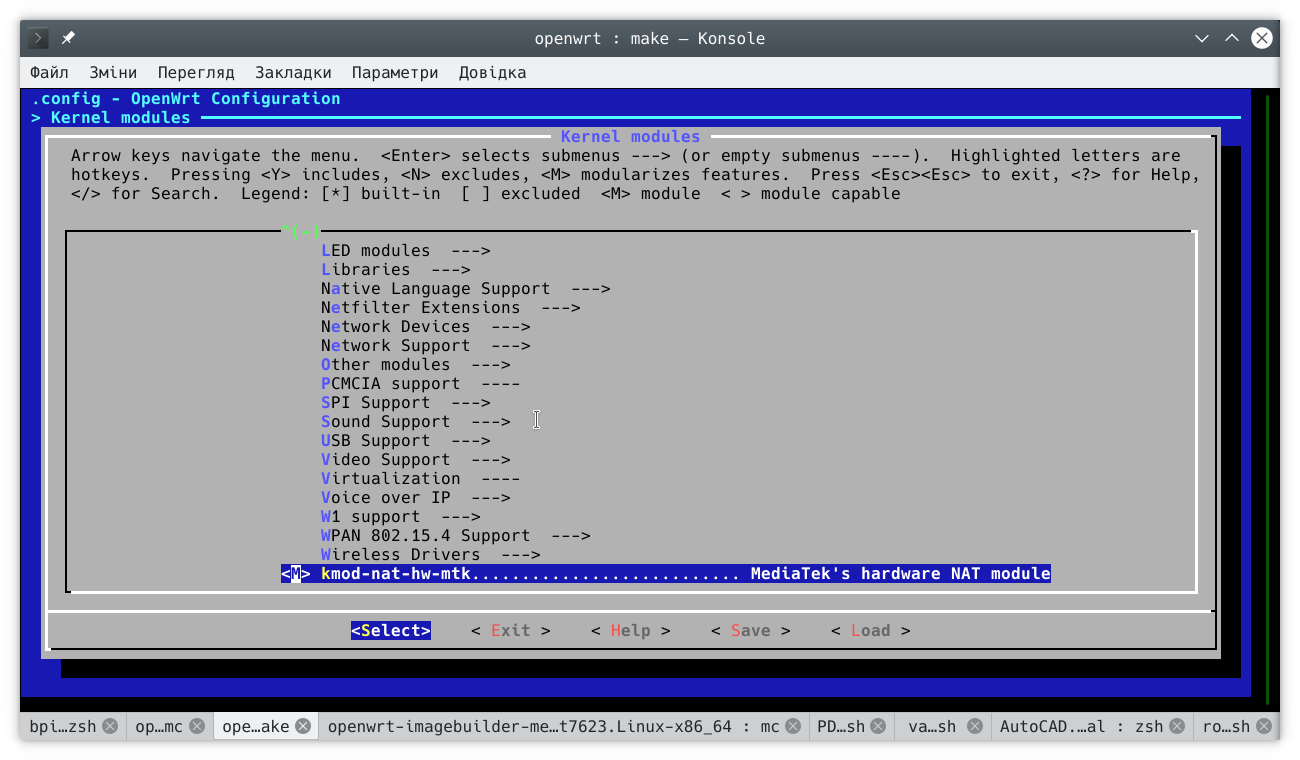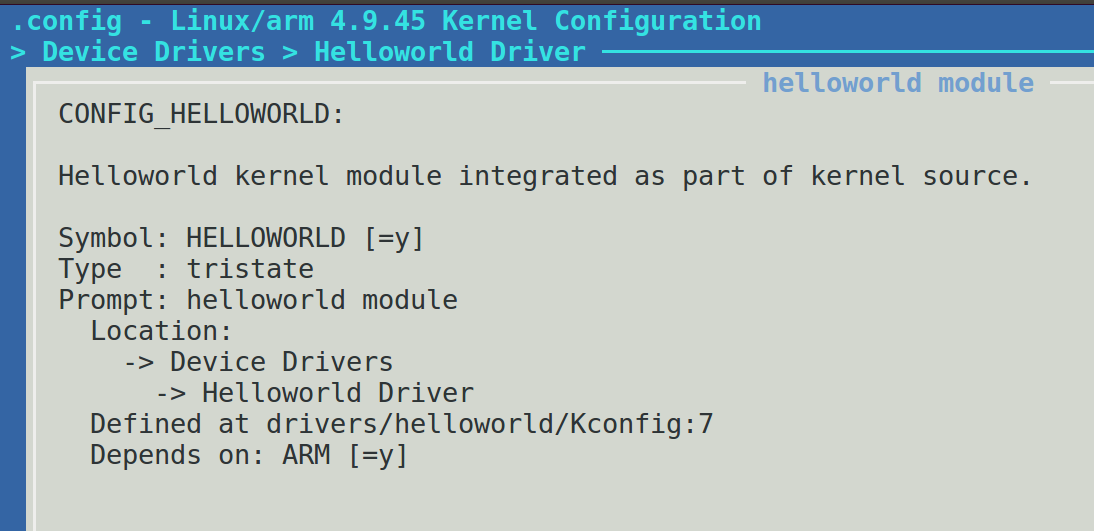Table of Contents
PC running slow?
Over the past few weeks, some of our readers have reported experimenting with building a kernel module.
Install most kernel development packages that match your immediate kernel.Install the dkms package from the EPEL repository (see Repositories).Create directory /usr/src/
Sometimes you may need to compile a Linux kernel module if you cannot recompile the entire kernel.
Note: It’s better to replace an existing one when the module is built as a module (M) rather than integrated into the kernel (y).
Build Environment
You must first allow them to install build dependencies such as your own compiler (base-devel) and Linux header files.
You then need to go back to get the source code for the major version of the code that you want to base the module on. You can try other kernel sources, but most of the compiled files will probably not load.
If the intended kernel version is the installed kernel, find your dog’s version with
$ uname -r
There are two main options for acquiring the required source. Each option has a slightly different usage and sentence tree.
TradingIndication Composition
See See Kernel/traditional compilation#Load base kernel. If you are using Git to get the latest source, you must show the version with a tag (for example, v4.1).
Arch Building System
See the ABS section for a general overview of the Arch Build system. For kernel source code, directory structure, and other details, see Kernel/Arch-System-Build.
Initial Configuration
If customers have the source code, please go to the submit page. For #Arch Build System reason, this directory will be src/archlinux-linux/ below where PKGBUILD is located.
The output of make will help with this. Start rooting from

$mrproper
Which command is used to build a module?
The kbuild system knows about building the external module thanks to the “M=
Note: make will remove both .config and .config.old. Perhaps you really want to save these files somewhere else before you clean them up.
The corresponding .config file is now required. If you don’t see the nearest config file on the market, perhaps from a brand new saved.config and you think the kernel version is definitely a running kernel, you can verify that this is the config file:
$zcat /proc/config.gz > .config
The .File config file is then configured to determine the kernel version. When implementing a kernel for sources, you should not ask for the exact current entry. However, for a version other than the initial kernel, you may be asked about certain products. In any case, for the #Arch Build System option, you should parse the pkgbuild::prepare() function.
If the module you want to compile has compiler options such as debug build but it hasn’t been compiled before, you may also need to tweak the kernel configuration. This can be done using one of the configuration targets mentioned in make help.
Run
$oldconfig
Composition Of Modules
How do I create a kernel module?
In order to properly compile and import our module, we need to find the EXTRAVERSION value type of the component of my current kernel version number so that we can match the version number exactly in the best kernel source code. EXTRAVERSION is a variable defined in the top-level kernel makefile, but for all makefiles in the vanilla kernel source, EXTRAVERSION can be empty; It is installed whenever it is only hPart of the Arch kernel build process. If it is present, the value of the Contemporary the EXTRAVERSION kernel can be found by looking at the output of each uname -r command. In general, a rendering core is a concatenation of three components. Namely digital version, EXTRAVERSION and LOCAL VERSION. The numeric version itself is the grand concatenation of three numbers. If LOCALVERSION was created from a PKGBUILD file, it looks like it was derived from the pkgrel prefix variable thanks to the dash. And EXTRAVERSION remains a suffix to the pkgver variable if the dot on the right, associated with the third digit of the version number, is replaced by a dash. For example, given the Linux package linux 5.5.8.arch1-1, I would say LOCAVERSION is -1. The MINOR VERSION is just -arch1. The output of uname -r in this example is actually 5 be.5.8-arch1-1.
Once the EXTRAVERSION value is known, we prepare the module assembly lender:
$ make EXTRAVERSION=modules_prepare
$ make Modules_prepare
How do I compile and install a kernel module?
Alternatively, extraversion=-arch1 if you really like to load modules with modprobe by implementing the --force-vermagic< option/code> to ignore kernel version number discrepancies, you can run:
$ make modules_prepare
Note. The use of EXTRAVERSION a is written in the top-level makefile to avoid manually specifying EXTRAVERSION a on the command line, which can lead to type mismatches. The kernel build process often detected this by causing the actual + character to be added to the LOCALVERSION configuration parameter. Example: 5.5.8-arch1-1+.
Finally, compile the desired module by specifying its naming convention. You can find the location of any module, including its directory address, with or modinfo.
$ make M=fs/btrfs
As a last resort, if all else fails, you can do this
$ Create modules
Compiling Modules Outside The Tree
How do I create a kernel module?
Modify the makefile by replacing every occurrence of helloWorld and kernelRead with the names of the modules you want to build.compile the modules by running be in the directory where the modules are.Become superuser now by typing.
Get the official source code for the current Treadmill Linux kernel, as described in the kernel/archive build system:
Create $ cd && mkdir$ asp improve linux$ asp Commander Linux
Then specify the exact source code extracted when compiling this module:
$ cd build/mymod$ make -C ~/build/linux/trunk/src/archlinux-linux M=$Module-PWD
Installing A Module
Now that the compilationI passed successfully, you just need to compress gzip and copy it to get the current kernel.
PC running slow?
ASR Pro is the ultimate solution for your PC repair needs! Not only does it swiftly and safely diagnose and repair various Windows issues, but it also increases system performance, optimizes memory, improves security and fine tunes your PC for maximum reliability. So why wait? Get started today!

If you have an existing module, you must replace it (and remember that reinstalling Linux systems will replace it with the default module).
What is kernel module for?
$xz fs/btrfs/btrfs.ko# cp -f fs/btrfs/btrfs.ko.xz /usr/lib/modules/`uname -r`/kernel/fs/btrfs/
Or you can already place the updated module in the update folder (create it if it doesn't already exist).
$ clubpenguin fs/btrfs/btrfs.ko.xz /usr/lib/modules/`uname -r`/updates
However, if you add a new specific module, you can simply copy it to an Extramodule (note that this is just an example, as btrfs is loaded not far from here).
# cp fs/btrfs/btrfs.ko.xz /usr/lib/modules/`uname -r`/extramodules/
In order to use installed modules, you must rebuild the module dependency using the "depmod" bridge.
If you've updated a particular early-loading module (like a module) copied to the initramfs, you just need to remember to rebuild it (otherwise your compiled module won't show up loaded).
# mkinitcpio -p linux
Possible Errors Of EXTRAVERSION
If the mThe following problems may occur.

What is needed for kernel module?
building environment First you need to match build dependencies like compiler (base-devel), then Linux headers. Next, you need to get the source code for our own version of the kernel on which the module will be offered. You can try to use additional kernel sources, but the compiled part will most likely not boot.
How do I install a Linux kernel module?
To load a kernel module, run modprobe modulename to show that root .By default, modprobe threatens to load a module from /lib/modules/kernel_version/kernel/drivers/.Some modules have dependencies, which are several other kernel modules that must be loaded before that module can be loaded.
Un Moyen Simple De Résoudre Les Problèmes De Création De Modules Du Noyau
Una Manera Fácil De Solucionar Problemas De Creación De Módulos Del Kernel
Un Modo Semplice Per Risolvere I Problemi Di Creazione Dei Moduli Del Kernel
Łatwy Sposób Na Naprawienie Problemów Z Budowaniem Modułu Jądra
Een Gemakkelijke Manier Om Problemen Met Het Bouwen Van Kernelmodules Op Te Lossen
Простой способ исправить проблемы сборки модуля ядра
커널 모듈 빌드 문제를 해결하는 쉬운 방법
Uma Maneira Fácil De Corrigir Problemas De Criação De Módulos Do Kernel
Ett Enkelt Sätt Att åtgärda Problem Med Kärnmodulbyggnad
Eine Einfache Möglichkeit, Probleme Beim Erstellen Von Kernelmodulen Zu Beheben